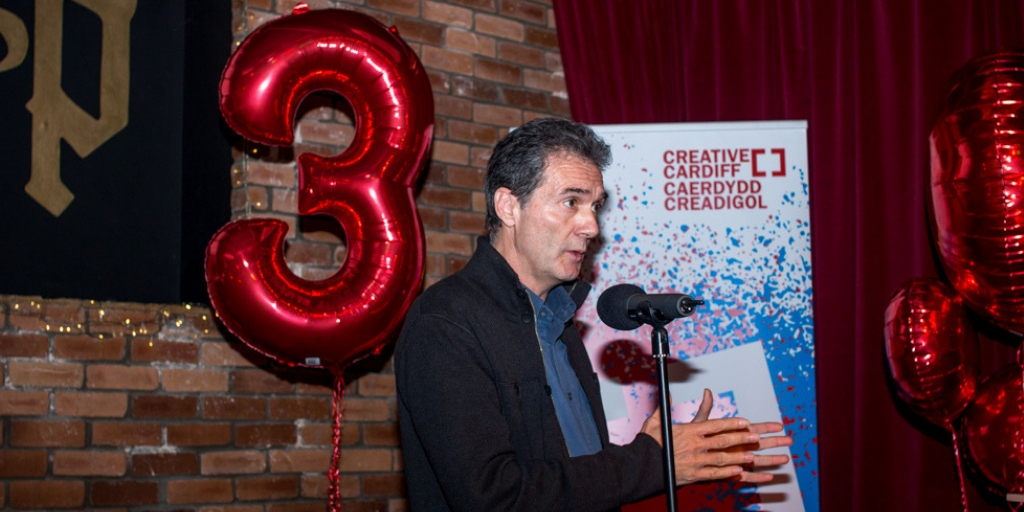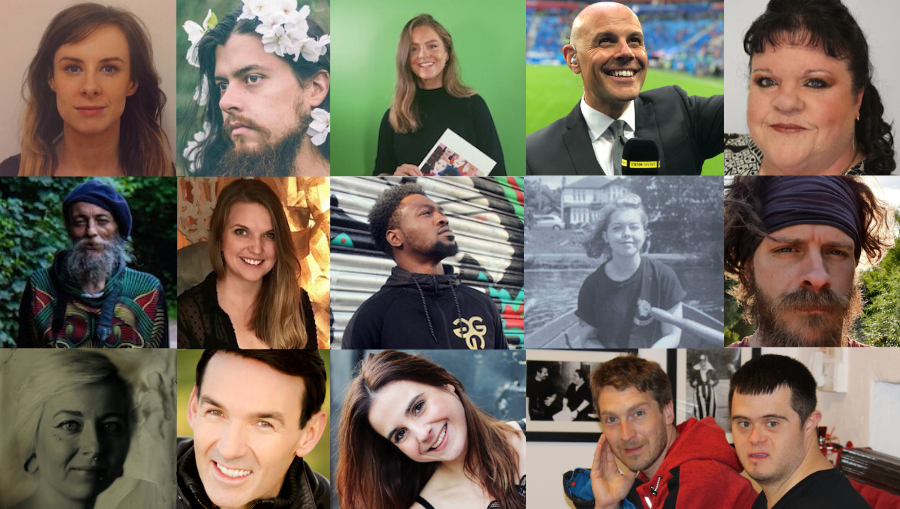 Justin is former Head of School at Cardiff University’s School of Journalism, Media and Culture. He has written widely about media, culture and politics. Justin is a co-founder of Creative Cardiff and continues to play an important part in planning its strategy and future.
Justin is former Head of School at Cardiff University’s School of Journalism, Media and Culture. He has written widely about media, culture and politics. Justin is a co-founder of Creative Cardiff and continues to play an important part in planning its strategy and future.
He writes:
Creative Cardiff began with a broad vision informed by what we knew about creative cities. We knew that most successful creative cities have strong networks. We knew that collaboration can inspire new forms of creativity. We knew that a city needs to be able to understand its own strengths and weaknesses to inform its future. And we knew we had to resist old divisions between the (generally subsidised) cultural sector and the (more commercially oriented) creative industries.
We also knew that we had to be realistic about how much could achieved by a small core team. Five years on, here are just a few of the things we’ve learned.
1. The alchemy of being bringing people together. Over the last five years, Creative Cardiff has employed many different forms of creative gathering, some focused and themed (the Coworking Collective, Immersive South Wales, conferences and workshops), others more open and diverse (the many ‘Show and Tells’, the hub crawls, the celebrations). There are never any guarantees, but the right provocation and the right mix has summoned a little bit of magic. It’s hard to measure the value of these in hard, accounting terms.
Their worth lies in what Raymond Williams called a ‘structure of feeling’: a sense of community and shared purpose, the spark of something new.
2. Building on diversity. When creativity becomes formulaic or predictable, our culture dies a slow and dull death. Creative energy comes from positive difference – which is why diverse companies are often more creative. Diversity is now built into Creative Cardiff ’s spirit. For me, the 2020 storywall project was a brilliant expression of that – a cluster of creative stories that showcase the diversity that has long been integral to our city’s creativity.
3. The importance of freelancers. Freelancers are an increasingly large part of the creative economy, but they are often neglected in policy and funding mechanisms. From year one, supporting freelancers has been core to Creative Cardiff’s activity. Its first piece of research (one of ‘52 things’) was the production a more detailed and definitive map of Cardiff’s creative sector. This was the first survey of its kind to go beyond existing date sets and include (over a thousand) creative freelancers. Freelancers now comprise the bulk of Creative Cardiff’s 3900 membership, a network that allowed us to co-create a survey of creative freelancers to detail the shortfalls of government support for sole traders during COVID-19, and thereby lobby effectively on their behalf.
4. Leading with evidence. Creative Cardiff’s primary focus is the creative sector, but its location in Cardiff University means that research has always been in its DNA. Creative Cardiff’s voice has been punctuated by a range of projects to understand the shape and character of our creative sectors, the benefits they bring and the conditions that allow them to thrive. Highlights have been the Festivals Research Group, work to evaluate the first Festival of Voice and a variety of international British Council research projects. It was this grounding that enabled Creative Cardiff to lead a successful UKRI research bid – worth £10 million – to create the Clwstwr programme in 2019. And it is this sense of curiosity that inspired the team to (beautifully) curate the first ever conference of the UK’s creative networks so that we might learn from one another. There was certainly a whiff of magic in that Zoom room.
But on a more personal note, Creative Cardiff has confirmed something I already knew: 90% of a project’s character comes from the people at the heart of it.
It has been my privilege to work with a small but brilliant team who have breathed such abundant life into Creative Cardiff. Its openness, ambition, positivity and energy comes from them.




